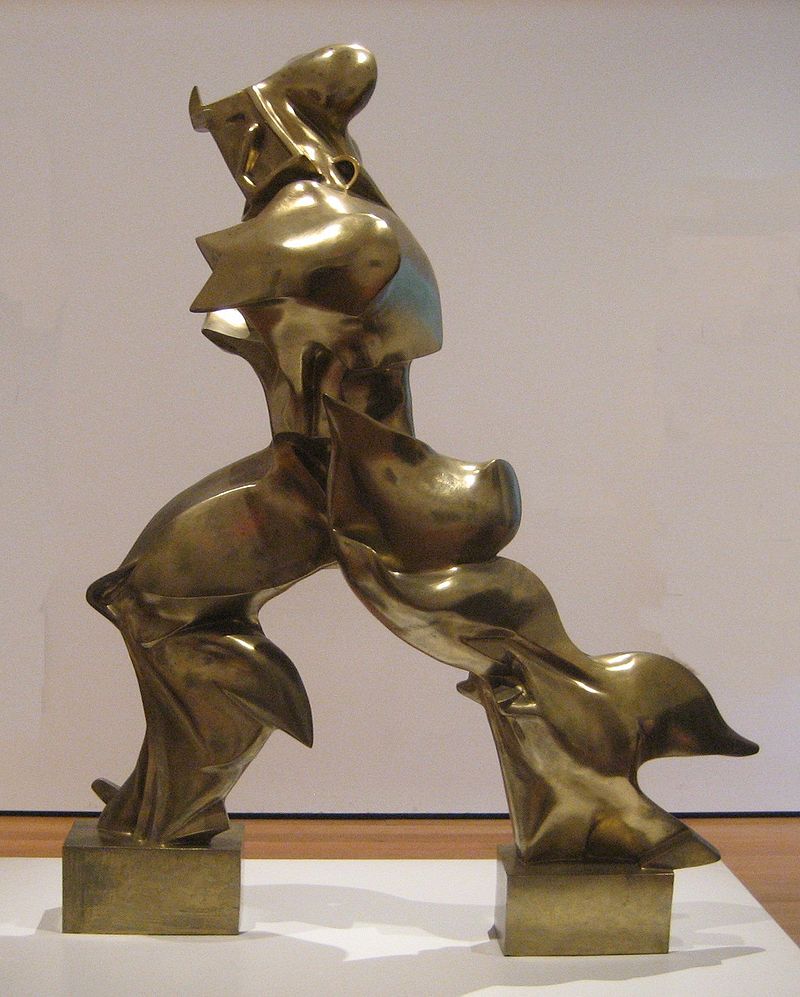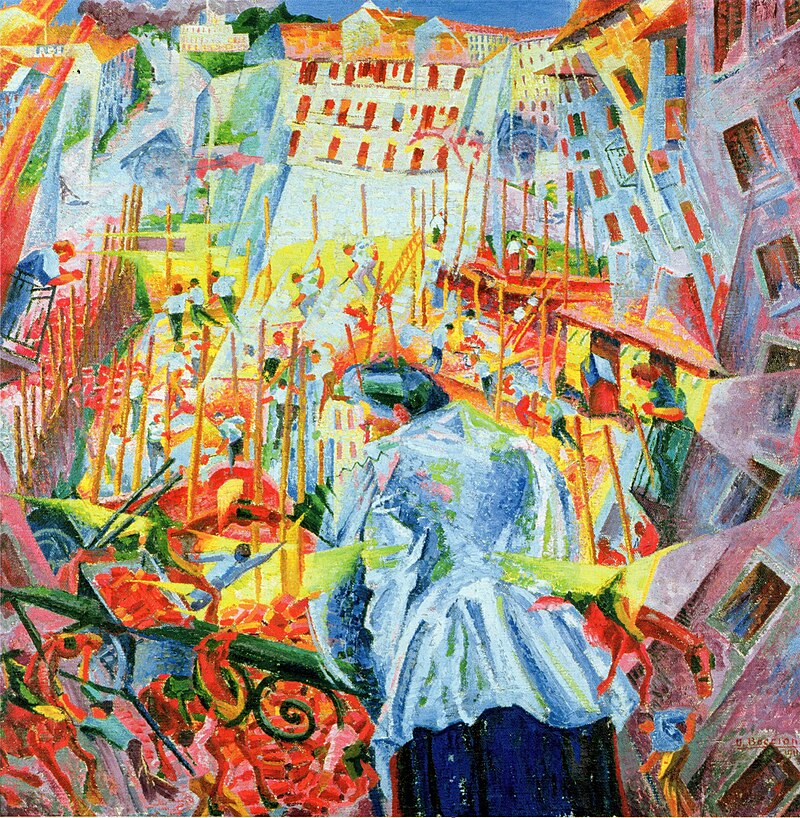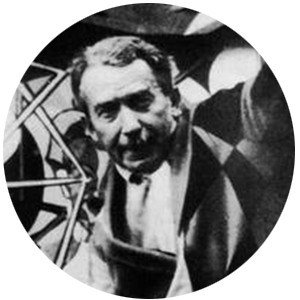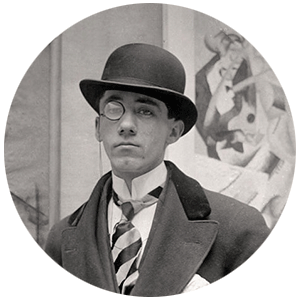Table of Contents |
The artworks in this lesson that are focused on Futurism are from the years 1911 to 1915 and are geographically located primarily in Rome, Italy.
Futurism was an avant-garde artistic movement that originated in Italy, eventually influencing other regions and art forms. While it began in Italy, its influence spread internationally, leading to the emergence of Russian Futurism and British Vorticism. Russian Futurism, though distinct, shared the original movement’s fascination with modernity and innovation. In England, British Vorticism emerged as a hybrid movement, blending the geometric abstraction of Cubism with the dynamic energy of Futurism, creating a unique and influential style.
The Futurist movement was formally launched in 1909 with the publication of The Futurist Manifesto by the Italian poet Filippo Tommaso Marinetti. This manifesto glorified the future, youth, speed, and technology, celebrating the imagery of mechanical objects like airplanes and cars as well as the industrial landscape of modern cities. The movement sought to break away from the past, expressing disdain for traditional values and classical art. This rejection of the past is encapsulated in this provocative declaration from the manifesto: “A speeding automobile is more beautiful than the Nike of Samothrace,” symbolizing the movement’s rejection of classical beauty to embrace the new and the modern.
This first image is one of the most important examples of Futurist sculptures.

Unique Forms of Continuity in Space
Museum of Modern Art, New York
1913
Bronze
Entitled Unique Forms of Continuity in Space, the above image shows the influence of Cubism and how it breaks the image apart into more discrete elements, creating multiple views. Each of the views contributes to the whole in how it depicts speed, movement, and a certain flow. Moreover, Unique Forms of Continuity in Space is often compared to the ancient Greek statue the Nike of Samothrace because of its flowing drapery-like forms that give a sense of motion. Yet, Boccioni’s work moves beyond the classical representation, pushing the boundaries of how the human form can be abstracted and fragmented to embody the Futurist ethos.
Inspired by synthetic Cubism’s use of unconventional materials, this statue was originally made of plaster before being cast in bronze after Boccioni’s death. Boccioni began his career in painting and, after being exposed to Cubism while in Paris, he developed his style, which has come to be so closely associated with Futurism.
Boccioni died during World War I at the age of 33. He was assigned to a cavalry regiment and was thrown from his horse and trampled during a training exercise. His untimely death cut short the career of one of the leading figures of the Futurist movement in sculpting and painting.
Below is Boccioni’s painting The Street Enters the House.

The Street Enters the House
1911
Sprengel Museum, Hanover, Germany
Oil on canvas
Boccioni combines the geometric forms of Cubism with the visceral sensations of movement and sound in how the forms and figures bend around the figure of a woman in the foreground. There is a sense of anxiety, noise, and energy in the image, and it captures the spirit of revolution, conflict, and social upheaval that was closely tied to the Futurist movement.
Boccioni was trained in the divisionist technique of Post-Impressionism by the Italian artist Giacomo Balla, who also taught Gino Severini this same technique. It involves separating brushstrokes into individual blotches of color that blend from a distance, similar to Georges Seurat’s technique of pointillism.
Balla’s painting of dynamism, sometimes just called “Dog on a Leash,” is a humorous example of the defining elements of Futurism—specifically, movement, speed, and dynamism.
 View Dynamism of a Dog on a Leash.
View Dynamism of a Dog on a Leash.
To convey the concept of motion and speed, rather than depicting a car, airplane, or another fast-moving object, the artist chose to portray a dachshund walking alongside its owner. The dog’s tiny legs, flapping ears, and wagging tail create a blur of movement that perfectly echoes the dynamic motion of its master.
Balla drew inspiration from the chronophotography of Étienne-Jules Marey, a technique that captures successive phases of movement in a single image. By integrating the concept of motion blur into his painting, along with the striations in the ground beneath the figures, Balla masterfully captures the sensation of speed and motion. His work vividly depicts the energy and fluidity of movement, making the viewer feel as though they are witnessing the action in real time.
Gino Severini, a student of Boccioni, also embraced these Futurist ideals and was one of the signatories of The Futurist Manifesto. This manifesto outlined the movement’s core beliefs, including a fervent celebration of modernity, technology, and the future. However, it also contained a more controversial element: the notion that war was a necessary and purifying force for society. This unsettling belief in war as a form of social cleansing was part of the Futurists’ broader rejection of traditional values and their radical vision for a transformed world.
Below is a painting titled The Armored Train by Gino Severini.
 View The Armored Train.
View The Armored Train.
This painting employs the geometric fragmentation characteristic of Cubism to deconstruct the imagery, resulting in a disorienting composition that effectively conveys the violence and chaotic energy of the scene. The shattered forms depict the train’s artillery as well as the soldiers locked in combat with an unseen force beyond the canvas, intensifying the sense of conflict and dynamism. Through these fractured, angular shapes, Severini captures the brutal essence of modern warfare, reflecting the destructive power and relentless motion of the machinery and men entangled in battle.
Severini’s portrayal of war, with its emphasis on the glorification of conflict, starkly contrasts with the emerging Dada movement in nearby Switzerland. While Severini and his Futurist contemporaries viewed war as a catalyst for societal change and a means for purifying the world through destruction, the Dadaists responded to the horrors of World War I with a philosophy rooted in anti-war sentiment and absurdism. Dada artists rejected the glorification of violence, instead embracing a worldview that emphasized the irrationality and senselessness of conflict. This ideological divide between the two movements highlights the broader cultural and artistic debates of the time, with Severini’s work representing a Futurist vision of war as a necessary and even heroic force, while Dada emerged as a powerful counterpoint, questioning and undermining such beliefs.
Source: THIS TUTORIAL WAS AUTHORED BY IAN MCCONNELL AND TAMORA KOWALSKI FOR SOPHIA LEARNING. PLEASE SEE OUR TERMS OF USE.